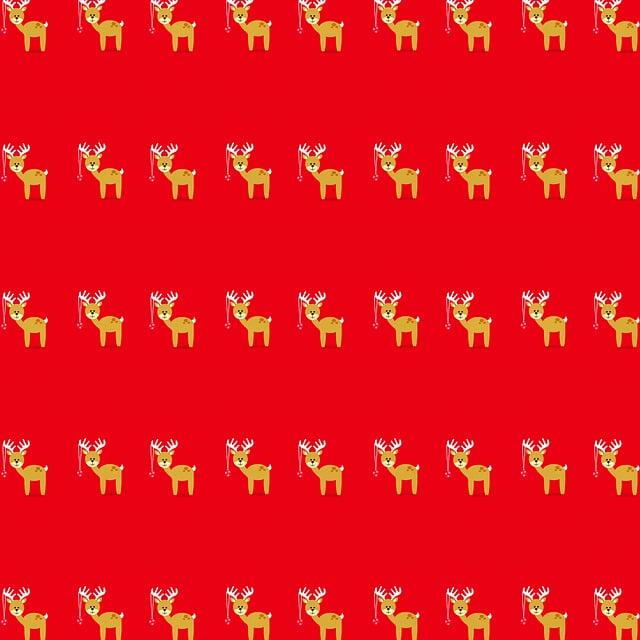In a quaint village, nestled among snow-capped hills, a tradition blossomed. Each Christmas, families crafted wreaths from evergreen branches, symbolizing eternal life. One year, a curious child asked her grandmother why they hung these circular wonders on their doors. With a twinkle in her eye, the grandmother explained that the circle represented unity and the unending love of family. As the child listened, she imagined the warmth of their home, the laughter shared, and the hope that each wreath brought—a reminder that love, like the evergreen, never fades.
Table of Contents
- The Historical Significance of Christmas Wreaths
- Symbolism and Meaning Behind the Circular Design
- Crafting Your Own Wreath: Tips for Personalization
- Incorporating Wreaths into Modern Holiday Decor
- Q&A

The Historical Significance of Christmas Wreaths
Christmas wreaths have a rich history that dates back to ancient times, symbolizing various meanings across different cultures. Originally, the circular shape of the wreath represented eternity, with no beginning or end, making it a powerful emblem of everlasting life. In ancient Rome, wreaths were crafted from laurel leaves and were awarded to victors in athletic competitions, signifying honor and achievement. As Christianity spread, the wreath evolved into a symbol of the Advent season, marking the anticipation of Christ’s birth. The use of evergreens, such as pine and fir, in wreath-making further emphasized the idea of life and renewal, even in the coldest months of winter.
Over the centuries, the tradition of displaying wreaths during the Christmas season has become a cherished custom in many households. These decorative pieces are often adorned with **red ribbons**, **ornaments**, and **lights**, transforming them into vibrant symbols of festivity and joy. The act of hanging a wreath on the door serves as a warm invitation to guests, signaling the spirit of hospitality and celebration within. Additionally, wreaths are often associated with various cultural practices, such as the German tradition of the Advent wreath, which features four candles representing the four Sundays leading up to Christmas. This blend of historical significance and modern interpretation continues to make wreaths a beloved element of holiday decor.

Symbolism and Meaning Behind the Circular Design
The circular design of wreaths carries profound symbolism, representing the eternal cycle of life and the unending nature of love and hope. Unlike linear shapes, the circle has no beginning or end, which beautifully encapsulates the idea of continuity and renewal. This aspect is particularly resonant during the Christmas season, a time when many reflect on the past year while looking forward to new beginnings. The evergreen materials often used in wreaths further enhance this symbolism, as they remain vibrant throughout the winter months, signifying resilience and the promise of life even in the coldest times.
Moreover, wreaths serve as a reminder of the interconnectedness of all things. The circular form invites viewers to consider the relationships and bonds that tie us together, whether with family, friends, or the community at large. As we hang wreaths on our doors, we not only beautify our homes but also extend a warm invitation to others, symbolizing hospitality and goodwill. This act of displaying wreaths during the festive season transforms them into more than mere decorations; they become emblems of unity, peace, and the shared joy that Christmas brings.

Crafting Your Own Wreath: Tips for Personalization
Creating a personalized wreath allows you to infuse your unique style and personality into your holiday decor. Start by selecting a base that resonates with your aesthetic—whether it’s a traditional grapevine, a modern foam ring, or even a rustic twig frame. From there, consider incorporating a variety of materials that reflect your taste. **Natural elements** like pinecones, berries, and dried flowers can add texture and warmth, while **glittery ornaments** or **ribbons** can introduce a touch of sparkle. Don’t hesitate to mix and match colors and textures; the beauty of a wreath lies in its individuality.
To further enhance your creation, think about adding personal touches that tell your story. You might include **family heirlooms**, such as an old ornament or a piece of fabric that holds sentimental value. Alternatively, consider using **themed decorations** that represent your favorite holiday traditions—perhaps miniature figurines or symbols that reflect your cultural background. By layering these elements thoughtfully, you can craft a wreath that not only beautifies your home but also serves as a cherished reminder of what the season means to you.

Incorporating Wreaths into Modern Holiday Decor
Wreaths have evolved from traditional symbols of welcome and celebration to versatile decor pieces that can enhance any modern holiday aesthetic. By incorporating a variety of materials such as **natural greenery**, **metal accents**, and **vibrant ornaments**, wreaths can be tailored to fit contemporary design sensibilities. Consider using unconventional bases like **geometric frames** or **woven textiles** to create a striking focal point that complements your overall decor theme. The beauty of wreaths lies in their adaptability; they can be hung on doors, displayed on walls, or even used as table centerpieces, making them a perfect addition to any festive setting.
To further personalize your holiday decor, think outside the box with your wreath embellishments. Incorporate elements such as **dried flowers**, **seasonal fruits**, or **handcrafted ornaments** to add a unique touch. You can also experiment with color palettes that reflect your style, whether it’s a classic red and green scheme or a more modern approach with **metallics** and **pastels**. By mixing and matching textures and colors, you can create a wreath that not only celebrates the season but also enhances your home’s aesthetic, making it a true reflection of your personal taste.
Q&A
-
What is the historical significance of wreaths during Christmas?
Wreaths have roots in ancient traditions, symbolizing victory and eternal life. In Christianity, they represent the cycle of life and the promise of resurrection, making them a fitting decoration for the Christmas season.
-
Why are wreaths circular in shape?
The circular shape of wreaths symbolizes eternity, as it has no beginning or end. This reflects the everlasting love of God and the eternal nature of life, which resonates deeply during the Christmas celebration.
-
What materials are commonly used to make Christmas wreaths?
Christmas wreaths are often crafted from a variety of materials, including:
- Evergreen branches
- Berries
- Pinecones
- Ribbons
These elements not only enhance the visual appeal but also symbolize hope and renewal.
-
How do wreaths fit into modern Christmas traditions?
Today, wreaths are a popular decoration that adorns doors and homes, serving as a warm welcome to guests. They are often personalized with unique embellishments, reflecting individual styles while maintaining their traditional significance.
As we hang our wreaths each holiday season, we embrace a tradition rich in symbolism and warmth. These circular adornments remind us of the joy of giving, the beauty of nature, and the enduring spirit of togetherness that defines Christmas.

大家好,我是彼得潘,專業的手法身體治療師。我喜歡探索和研究各種主題,並透過與人工智慧的合作分享專業、實用、有趣的文章。我們定期進行人工審核,以確保內容的準確性。如果您發現文章中有任何不準確的地方,請隨時與我們聯繫,我們會及時糾正。您可以透過 [email protected] 與我們聯繫。



